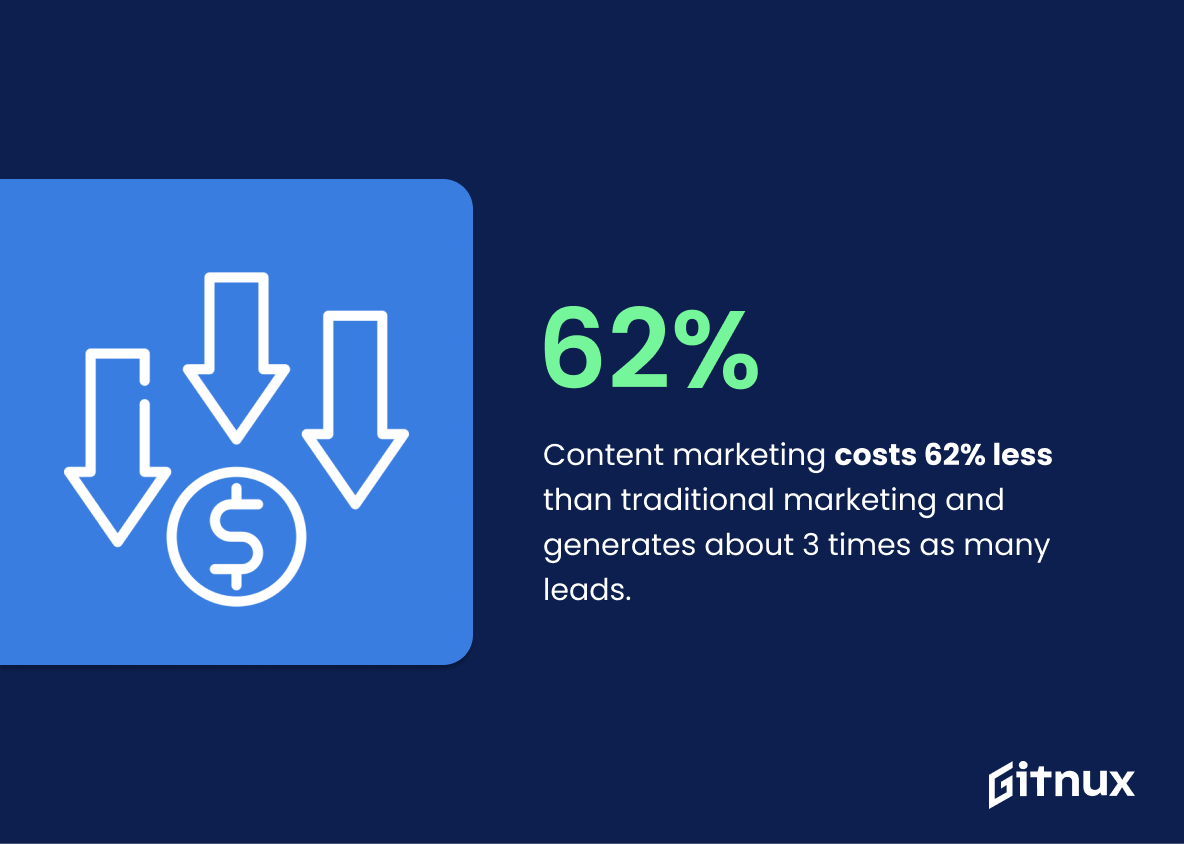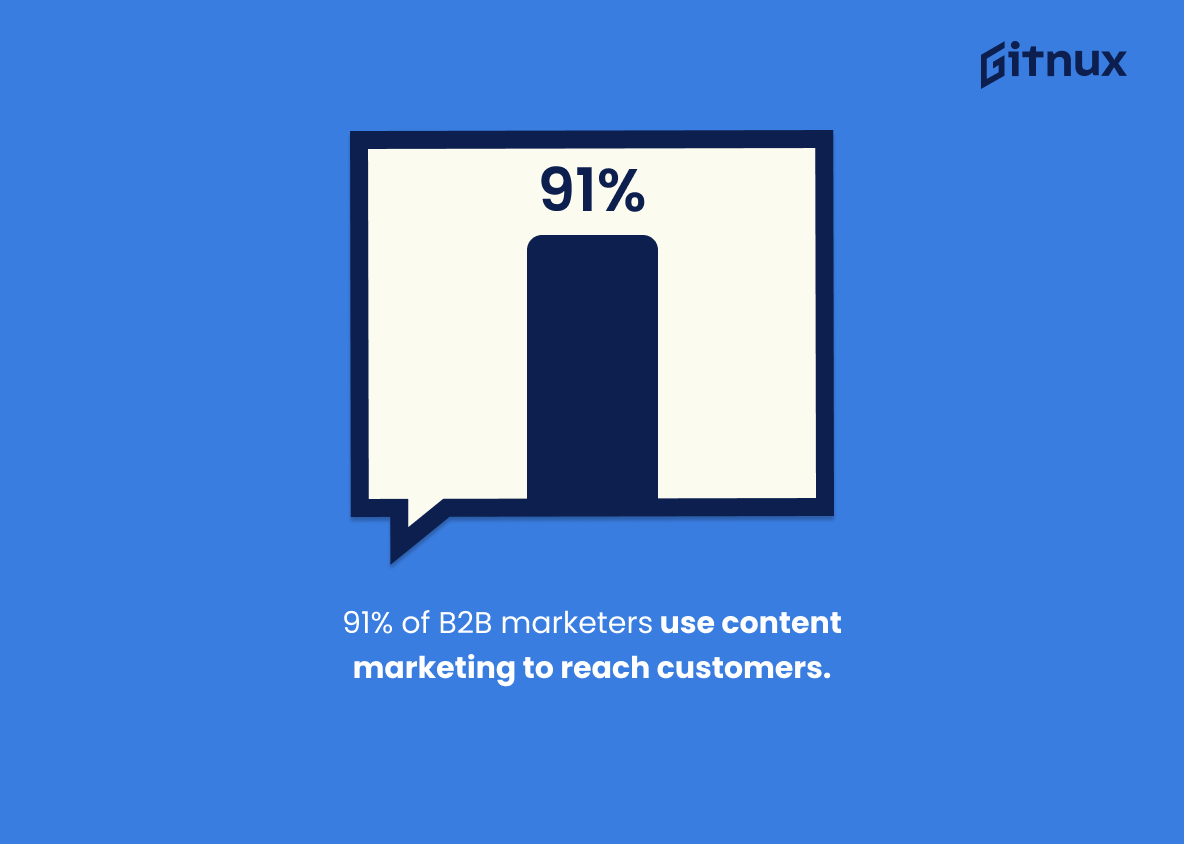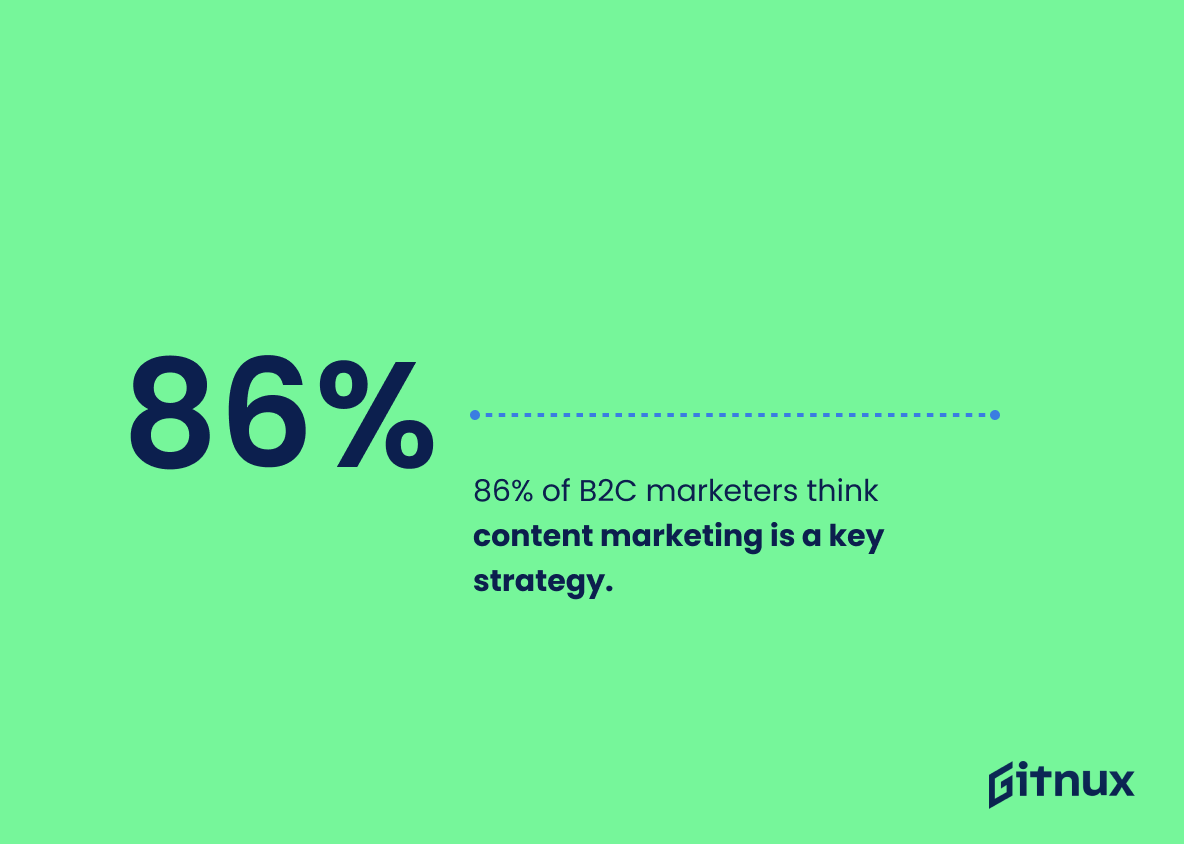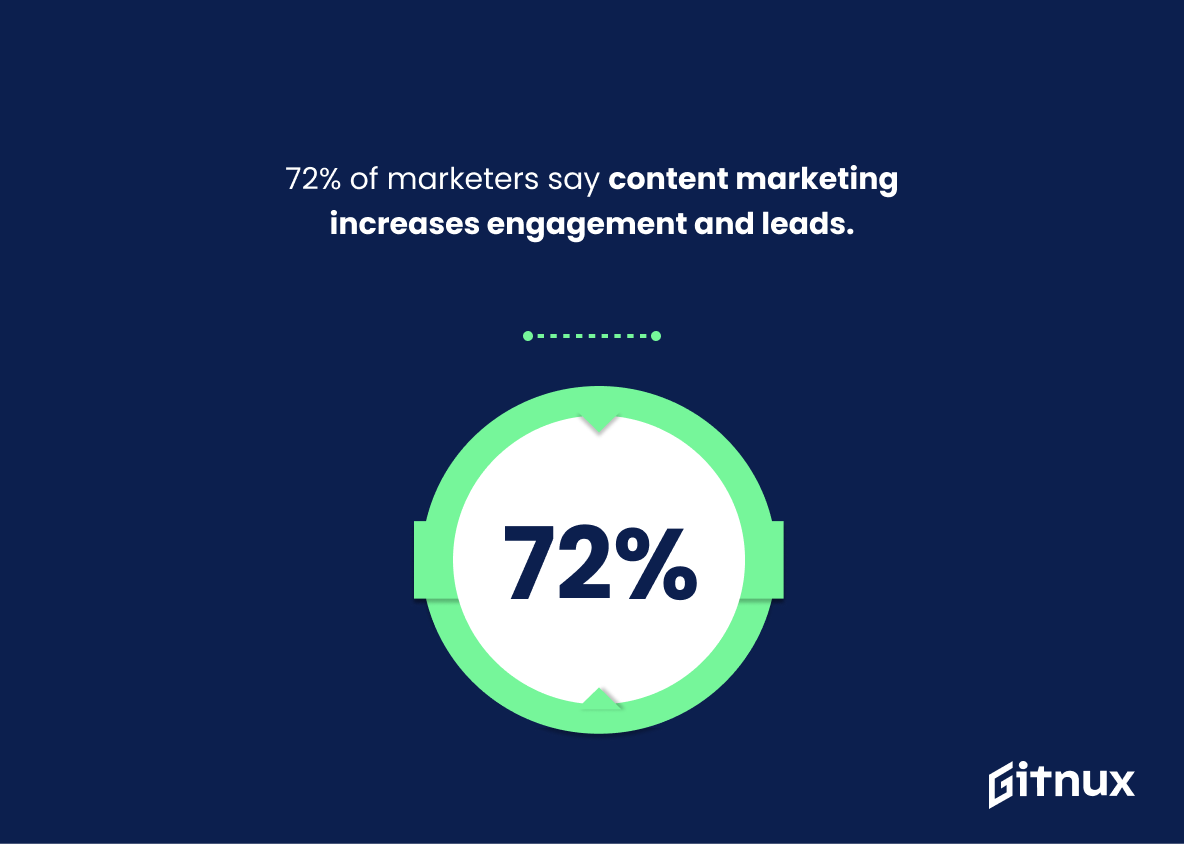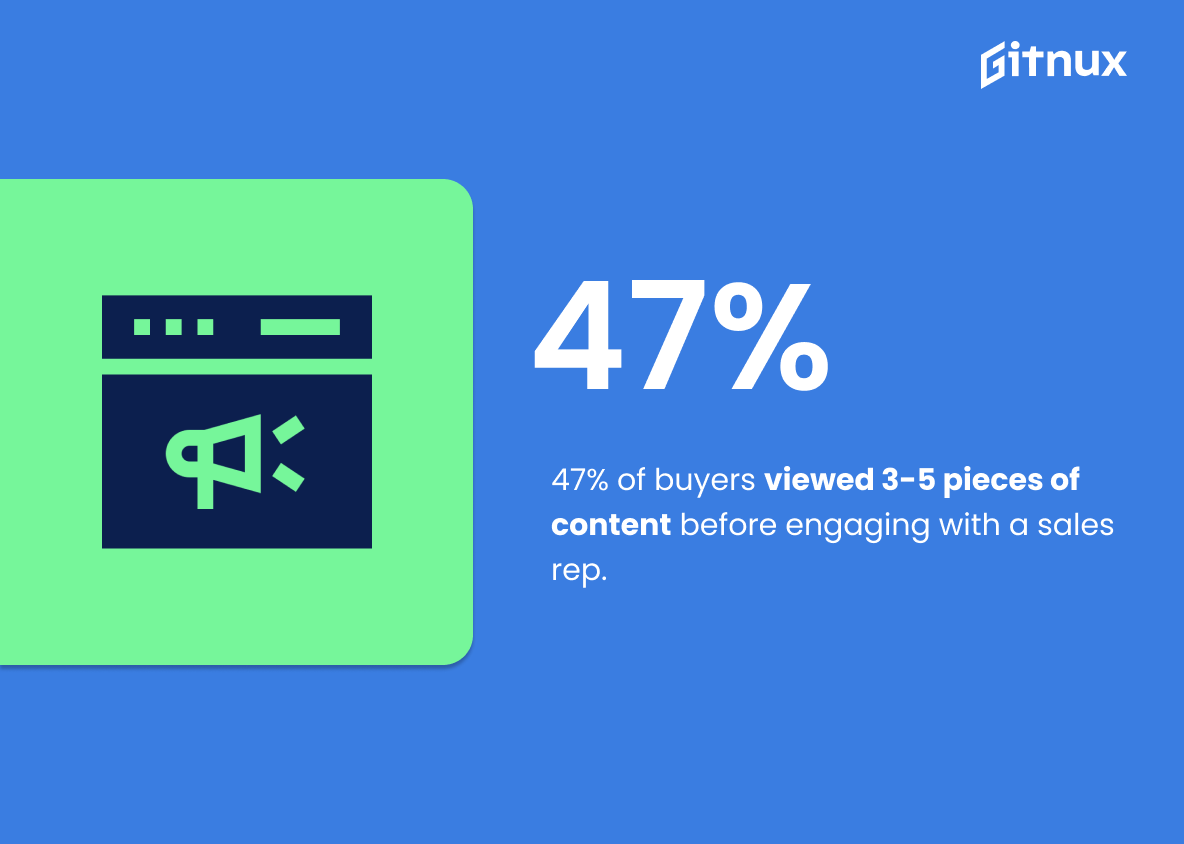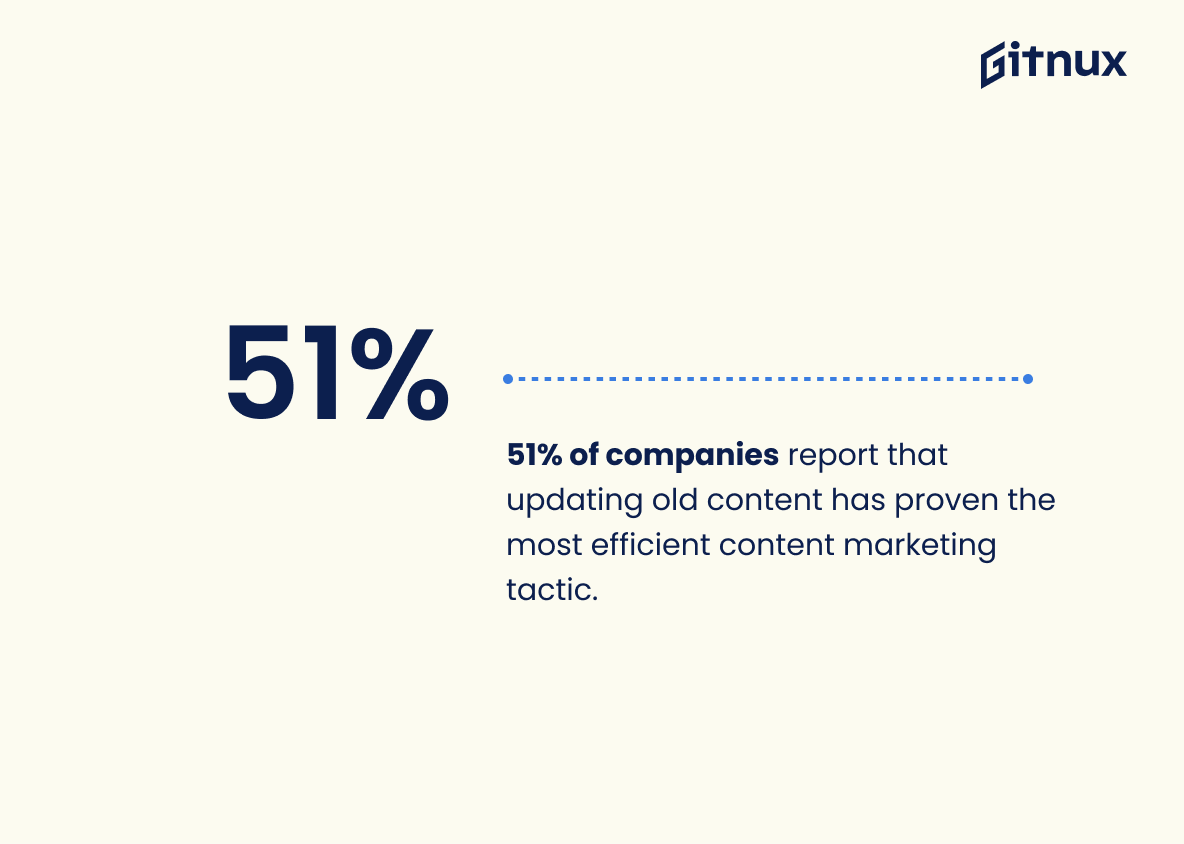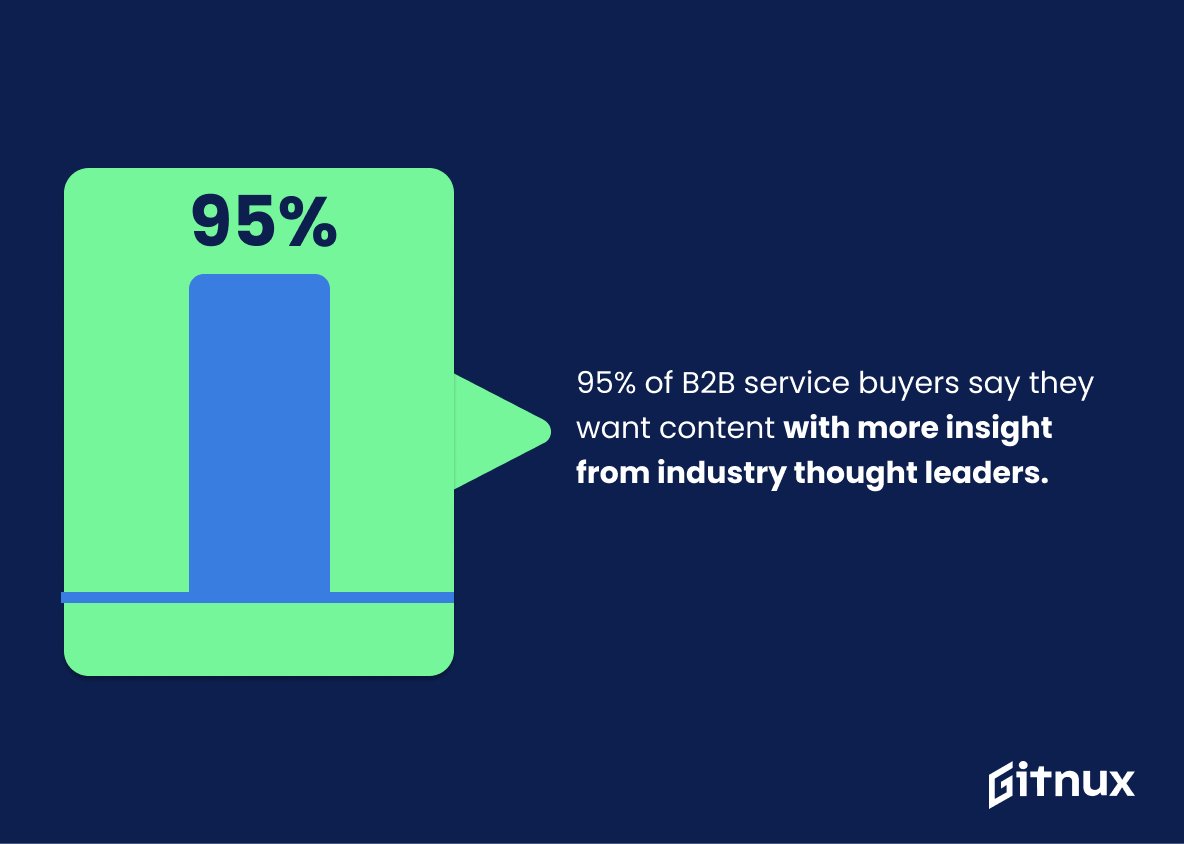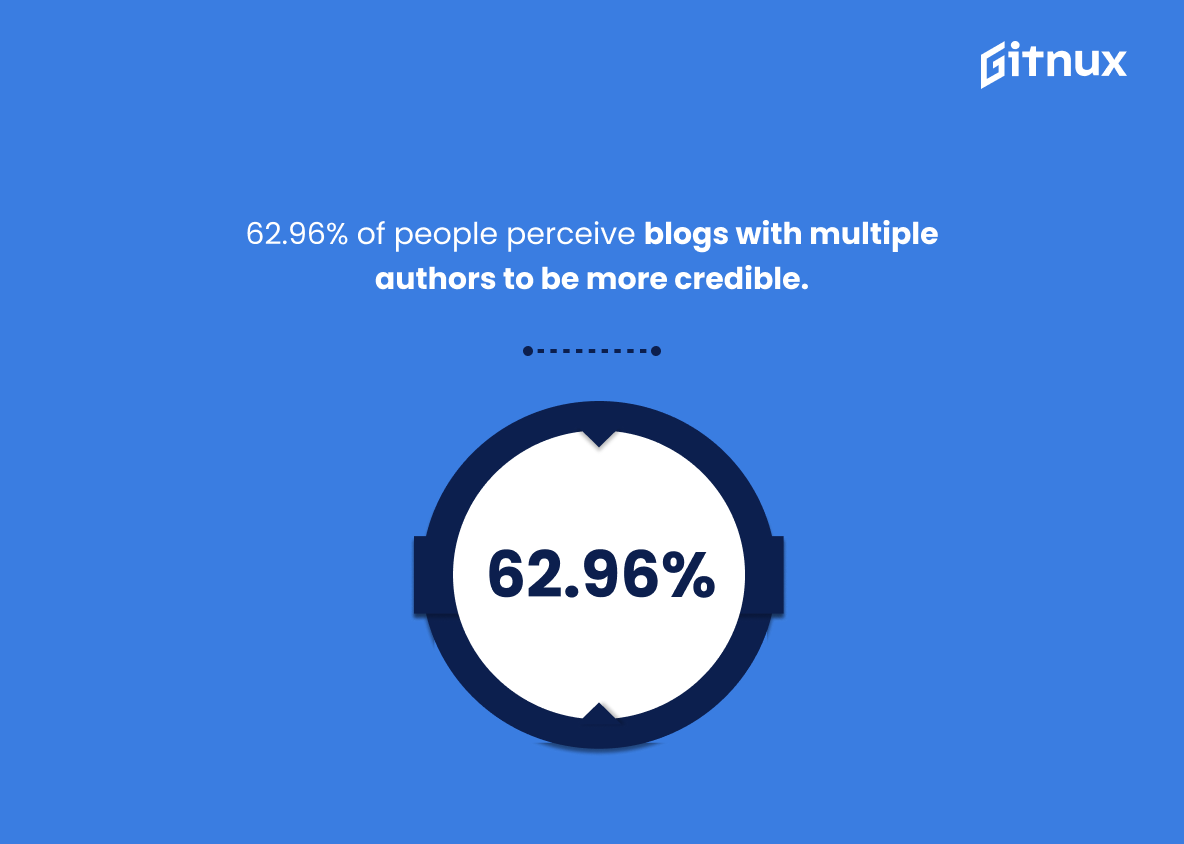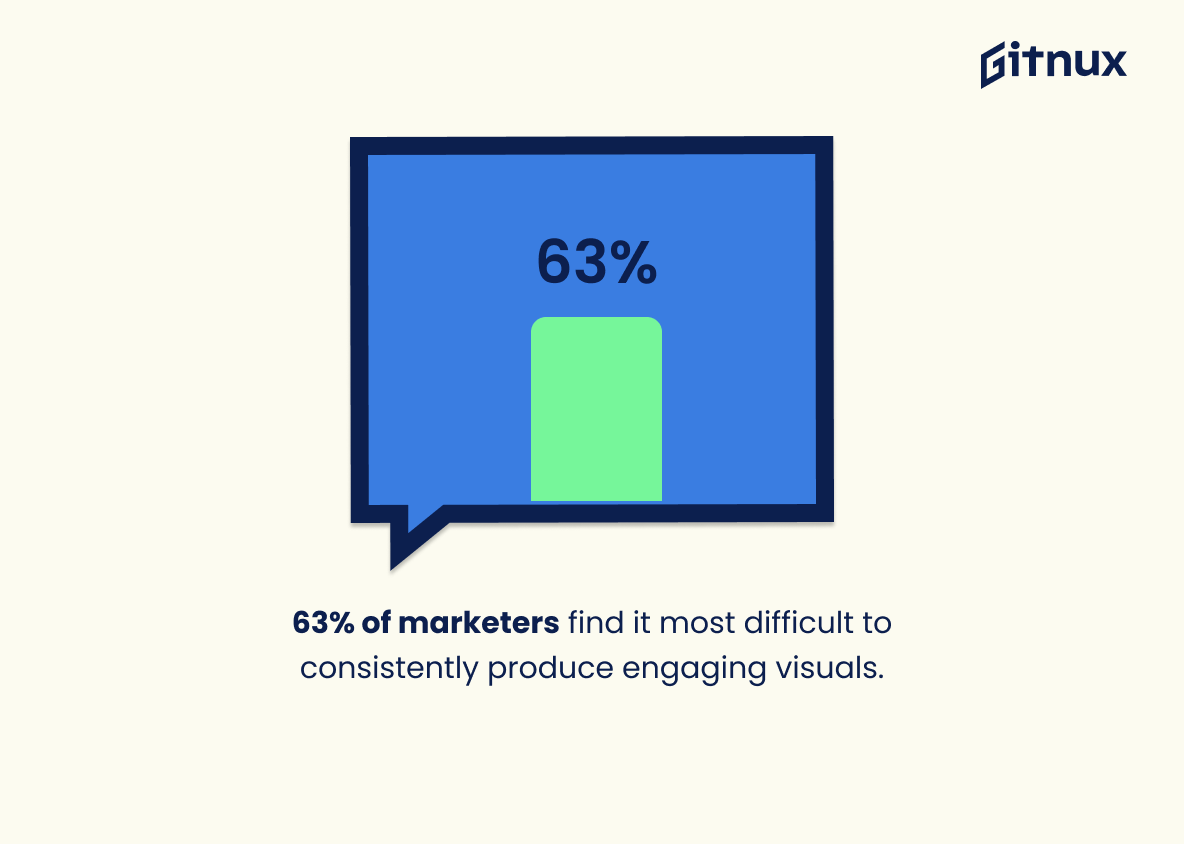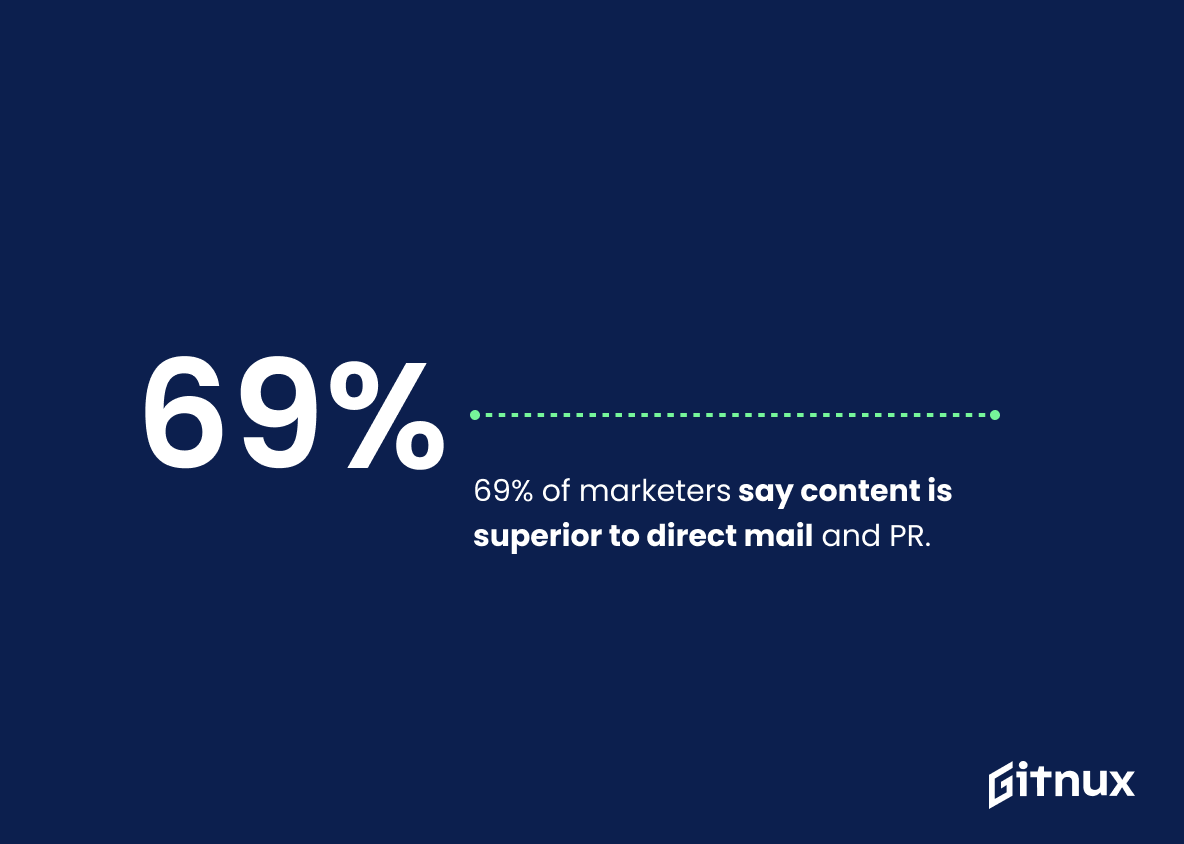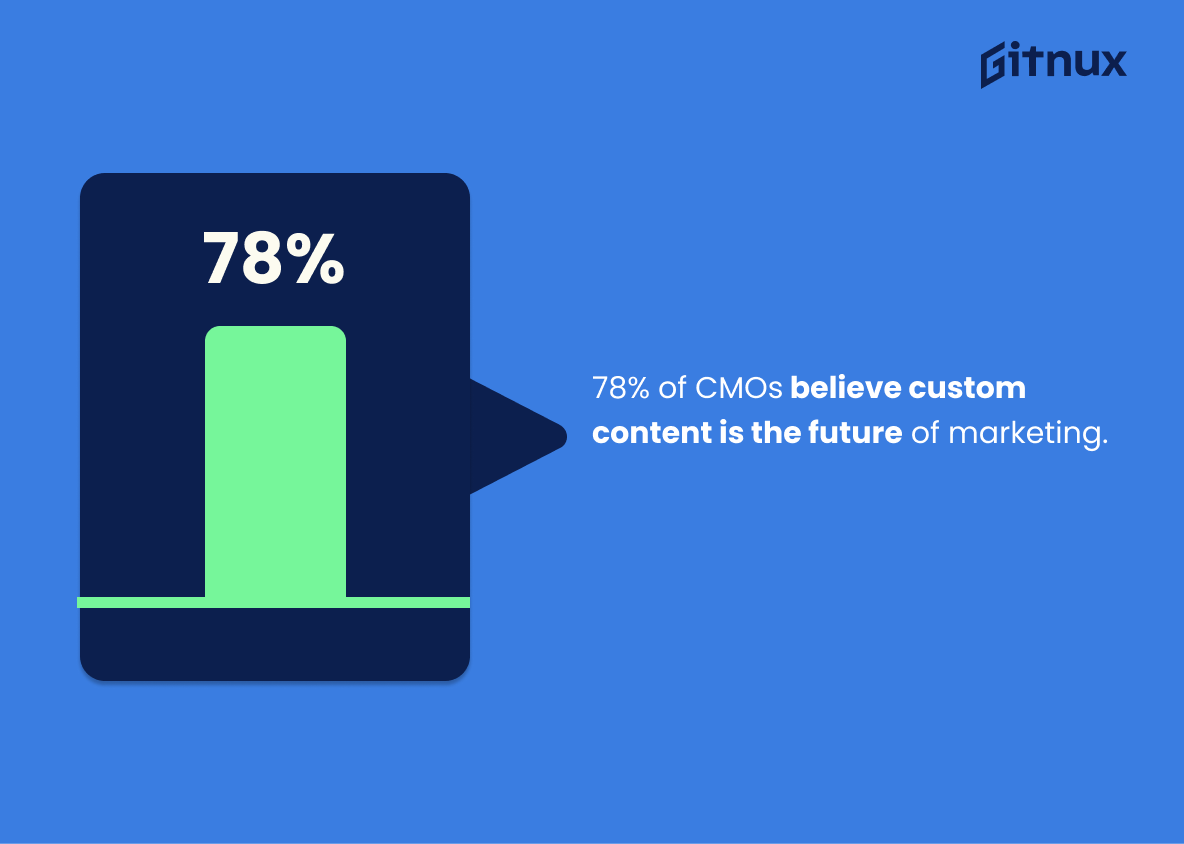Content marketing is an essential part of any successful business. It’s the process of creating, publishing, and distributing content to attract and retain customers. To stay ahead of the competition, it’s important to keep track of the latest content marketing statistics.
In this article, we’ll explore the current trends in content marketing and discuss how you can use them to your advantage. We’ll look at the most popular content formats, the most effective channels for content distribution, and the most successful strategies for content promotion. With the right information, you can create a content marketing plan that will help you reach your goals.
Content Marketing: The Most Important Statistics
79% of businesses rely on content marketing to produce high-quality leads.
Content marketing is a vital company strategy according to 81% of marketers.
90% of marketers will continue devoting the same amount of funds and resources to content marketing next year, while 66% plan to increase it.
General content marketing statistics
79% of B2B marketers reported their organization has a content marketing strategy.
32% of CMI survey respondents indicated their content marketing team ranges in size from 2 to 5 employees. However, 35% said they don’t have a person dedicated full-time to content marketing (this is more prevalent among small companies).
The content marketing market size should increase by USD 417.85 billion USD, and is expected to grow at a CAGR of 16% between 2020 and 2025.
Buyers are willing to spend no more than 5 minutes reviewing a majority of content formats.
According to the survey, 75% of the public prefers articles they read to be under 1,000 words. Only 5% prefer articles over 2,000 words.
97% of Semrush survey respondents claimed that content was a tactic that formed an important part of their overall marketing strategy in 2021.
There is a 22% increase in the search for “what is content marketing” along with other telltale searches that strongly indicate content marketing is on the rise.
47% of buyers view 3 to 5 pieces of content prior to engaging with a sales rep, and the majority of them expect brands to create content to gain their interest.
79% of businesses rely on content marketing to produce high-quality leads.
The vast majority of online content gets few social shares and backlinks. 94% of all blog posts have zero external links.
57% of content marketers, surveyed by Semrush, had a documented content marketing strategy. 19% reported an advanced content marketing strategy, 42% reported they are taking their first steps in content marketing. 36% of respondents claimed their strategy was fairly developed.
4.95 billion internet users around the world can be reached, engaged, and converted by publishing great content on various channels. Content powered by content marketing software is especially effective and efficient in getting this work done.
A study conducted by the Content Marketing Institute and LinkedIn reported that 80% of the content created by marketing teams goes unused by sales. This number could discourage marketers, making them feel like the assets they work on are being created for nothing.
65% of marketers can’t quantitatively demonstrate the impact of their marketing.
Content marketing is reportedly a vital company strategy according to 81% of marketers.
Main content marketing tools and channels
According to CMI, the most popular tools that marketers and their teams use while creating content are keyword research tools (78%) and editorial calendars (70%). Surprisingly, only 22% indicated they use fact-checking procedures/tools, revealing an important step missing for those striving to build trust/credibility with their audiences.
The top channels marketers distribute content organically are social media platforms (89%), email (87%), and their organization’s website/blog (86%). And while 54% are speaking/presenting at virtual events, only 38% are writing guest posts for other publications (and even fewer are doing guest spots, working on media/influencer relations, or participating in collaborative social spaces).
As for paid content distribution, the use of social media advertising/promoted posts increased to 83% from 60% last year, with low-cost opportunities likely being a factor. LinkedIn is the most often used B2B social media platform, both for organic and paid distribution.
64% of B2B buyers said they prefer podcasts at the top of the funnel, while for 48% of buyers webinars were valuable in the mid-stage of their buying journey.
As for content formats that are more frequently shared with peers and colleagues, blog posts took the top spot, with 74% of respondents stating they share blogs regularly. Blog posts saw a notable year-over-year increase, with 71% stating they consumed blog content during the purchase process, compared to 66% last year.
Other notable formats often shared with colleagues include case studies (64%), infographics (62%), webinars (61%), and third-party/analyst reports (55%).
In terms of which channels content is most frequently shared, email (70%) and LinkedIn (52%) continue to rank the highest, which was similar to last year. Facebook saw notable growth, with 38% stating they occasionally or frequently share business-related content on the social platform.
The top 4 content types are infographics, blogs, videos, and photos. With video becoming a more and more popular content type.
The latest content marketing trends
The use of content creation/collaboration/workflow technologies increased to 58% in 2021 from 48% in the previous year.
49% of B2B buyers said they now rely more on content to research and make purchase decisions.
Semrush prepared a list of main trends in content marketing, according to tactics that brought the most success to their survey participants. 55% of successful content marketing strategies focused on improving the quality of content, 46% of those surveyed made SEO a priority. 41% are focused on creating more video and visual content, while 38% are updating and repurposing existing content. 35% voted for website optimization, and 28% are analyzing competitors’ content.
46% of companies that had highly successful content marketing increased their paid content promotional budget in 2021.
19% of companies believed their content marketing efforts were very successful in 2021. 33% were moderately successful, and 39% found their content marketing efforts to be only somewhat successful in 2021.
More than 25% of marketers use direct messages to offer customer support, and 15% of marketers plan to try it for the first time in 2023.
88% of marketers who have an SEO strategy will increase or maintain their investment in 2023, which is a slight uptick from the year before (84%).
76% of content marketers measure their content marketing performance with organic traffic, while 22% use backlinks as the main metric.
90% of marketers will continue devoting the same amount of funds and resources to content marketing next year, while 66% plan to increase it.
For 75% of content marketers, SEO was the most efficient content marketing tactic they implemented in 2020. Followed by publishing more “How to” guides and educational content (45%).
Longer headlines are correlated with more social shares. Headlines that are 14-17 words in length generate 76.7% more social shares than short headlines. Question headlines (titles that end with a “?”) get 23.3% more social shares than headlines that don’t end with a question mark.
71% of B2B buyers read blog content before they purchase something from a brand. That means the words you write and then post online can influence purchasing decisions.
45% of content marketers want to increase brand awareness, 37% want to attract more traffic to their website. 36% are focused on generating leads through content marketing, 27% of respondents want increased sales and revenue, and 23% strive for improved customer loyalty and engagement with their brand.
During a survey carried out in 2021 among marketers from across the globe, improving the quality of the content was named the most effective content marketing tactic. Around 55% of respondents said it helped them the most to make their 2021 content strategy more successful. Collaborating more with industry influencers was mentioned by 14% of interviewed marketers.
The top content marketing challenges
Buyers are becoming more discerning and selective in the content they consume. 88% of buyers agree that content producers need to focus less on product specifics and more on the value that can be brought to their business. 75% strongly agree that producers should use more data and research to support the claims and suggestions made in their content.
65% strongly agree that making content easier to access through fewer form fields or even single-click registration would also help vendor credibility.
The top content marketing challenges, revealed by marketers, are attracting quality leads with content (41%), generating enough traffic and promoting content (39%), creating content that resonates with our audience (31%), proving the ROI of content (30%), and improving the SEO performance of content (29%).
Semrush found that 53% of companies that were unsuccessful with content marketing in 2021 spent less than 5% of their marketing budget on content. 73% of companies who increased their spending from 10% to 70% of their total marketing budget to content marketing were very successful.
Another survey on building an effective content marketing funnel showed that 48% of content marketers see creating content that drives traffic as their biggest challenge, and 83% consider organic traffic the key content efficiency metric.
Supplementary Statistics
Content marketing costs 62% less than traditional marketing and generates about 3 times as many leads.
This demonstrates that content marketing is not only more cost-effective than traditional marketing, but also more successful in generating leads. This makes it an invaluable tool for businesses looking to maximize their marketing efforts.
91% of B2B marketers use content marketing to reach customers.
The vast majority of B2B marketers have found success in using content marketing to engage their target audience. This statistic is an invaluable resource for anyone looking to learn more about the power of content marketing and how it can be used to reach customers.
86% of B2C marketers think content marketing is a key strategy.
Most B2C marketers recognize the value of content marketing and are actively utilizing it as a key strategy. This statistic is a valuable addition to any blog post about Content Marketing Statistics, as it provides a clear indication of the current state of content marketing in the B2C space.
60% of marketers create at least one piece of content each day.
Thus, also marketers recognize the value of creating content on a daily basis, and are actively investing their time and resources into doing so. This statistic is a powerful reminder that content marketing is an essential part of any successful marketing strategy.
72% of marketers say content marketing increases engagement and leads.
The majority of marketers have seen an increase in engagement and leads as a result of their content marketing efforts, making it a valuable tool for businesses looking to increase their reach and visibility. By including this statistic in a blog post about Content Marketing Statistics, readers can gain a better understanding of the potential benefits of content marketing and how it can help them achieve their goals.
47% of buyers viewed 3-5 pieces of content before engaging with a sales rep.
When buyers are presented with multiple pieces of content, they are more likely to engage with a sales rep. This indicates that content marketing is an effective way to reach potential customers and build relationships with them. Furthermore, it suggests that content marketing can be used to nurture leads and drive conversions.
Long-form blog posts generate 9x more leads than short-form blog posts.
This is a powerful reminder of the importance of long-form blog posts when it comes to content marketing. It highlights the fact that longer blog posts can be more effective in generating leads than shorter ones, and should be taken into consideration when creating content for a content marketing campaign.
51% of companies report that updating old content has proven the most efficient content marketing tactic.
Companies are recognizing the value of refreshing existing content, rather than creating new content from scratch. This is an important insight for content marketers, as it suggests that investing in updating existing content can be a more efficient and cost-effective way to reach their target audience.
95% of B2B service buyers say they want content with more insight from industry thought leaders.
By creating content that meets this need, businesses can better engage their target audience and build trust with potential customers. This is a key factor in driving conversions and increasing sales.
62.96% of people perceive blogs with multiple authors to be more credible.
Having multiple authors lends credibility to the blog post, as it implies that the information is backed up by multiple sources and is more likely to be accurate. This can help to ensure that readers trust the content and are more likely to take the information seriously.
Blog posts are among the most shared content online.
Blog posts are a highly effective way to reach a wide audience. It is a reminder that content marketing is an invaluable tool for businesses looking to increase their visibility and reach potential customers. Furthermore, this statistic highlights the importance of creating quality content that resonates with readers and encourages them to share it with their networks.
63% of marketers find it most difficult to consistently produce engaging visuals.
This highlights the need for marketers to be creative and innovative in order to produce visuals that will capture the attention of their target audience. It also speaks to the importance of having a well-thought-out content marketing strategy that includes visuals that are both engaging and relevant.
69% of marketers say content is superior to direct mail and PR.
The majority of marketers recognize the potential of content to reach and engage audiences in a way that direct mail and PR cannot. This statistic is an important reminder of the importance of content marketing and its ability to drive results.
78% of CMOs believe custom content is the future of marketing.
The majority of CMOs recognize the importance of custom content in the future of marketing, and that content marketing is likely to become an increasingly important part of any successful marketing strategy. This statistic is a valuable insight for anyone looking to stay ahead of the curve in content marketing.
Video is projected to claim more than 80% of all web traffic by 2021.
As video continues to dominate web traffic, content marketers must recognize the need to create and distribute video content to reach their target audiences. With video content becoming increasingly popular, content marketers must ensure that their content is optimized for video consumption in order to maximize their reach and engagement.
97% of marketers say video has helped increase user understanding of their product or service.
Therefore, video should be an integral part of any content marketing strategy.
90% of customers also say videos help them make buying decisions.
This statistic is a powerful testament to the effectiveness of video content in content marketing. It shows that they are an invaluable tool for helping customers make informed decisions, and that content marketers should be taking advantage of this powerful medium.
Conclusion
Content marketing is an essential part of any business. With the understanding of the latest content marketing statistics, you can create a successful content marketing strategy that will help you reach your target audience and grow your business.
With the right content and the right strategy, you can create a powerful and successful content marketing campaign that will help you stand out from the competition and achieve your goals.
References
Backlinko: “Here’s What We Learned About Content Marketing”, cited January 2023. (Source)
Bython Media: “5 Ways to Improve Your Content Marketing ROI in 2022”, cited January 2023. (Source)
Contently: “The Lost Art of the Mid-Range Blog Post, cited January 2023. (Source)
Content Marketing Institute: “11th Annual B2B Content Marketing Benchmarks, Budgets, and Trends report”, cited January 2023. (Source)
Demand Gen Report: ” 2018 Content Preferences Survey Report”, cited January 2023. (Source)
HubSpot: “The Top Marketing Trends of 2023 & How They’ve Changed Since 2023”, cited January 2023. (Source)
PR Newswire: “Content Marketing Market Size to Increase by USD 417.85 Bn”, cited January 2023. (Source)
Respona: “80 Content Marketing Statistics For 2022”, cited January 2023. (Source)
Semrush: “40+ Content Marketing Statistics to Power Your 2022 Strategy”, cited January 2023. (Source)
Semrush: “Content Marketing ROI: How To Measure Your Success”, cited January 2023. (Source)
Semrush: “The State of Content Marketing 2020 Global Report”, cited January 2023. (Source)
Showpad: “8 Surprising Stats About the ROI of Marketing Content”, cited January 2023. (Source)
Statista: “Most effective content marketing tactics worldwide in 2021”, cited January 2023. (Source)
ZipDo, cited June 2023: Content Marketing Statistics
